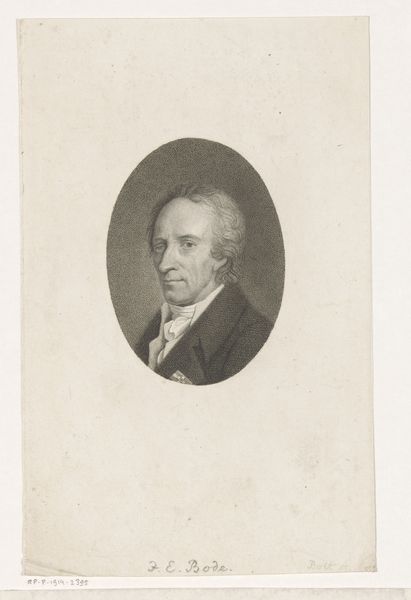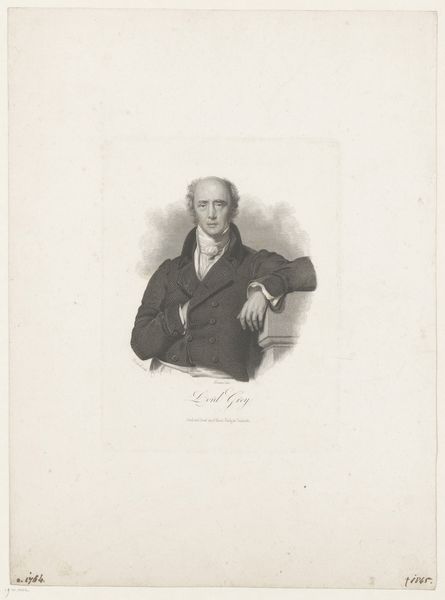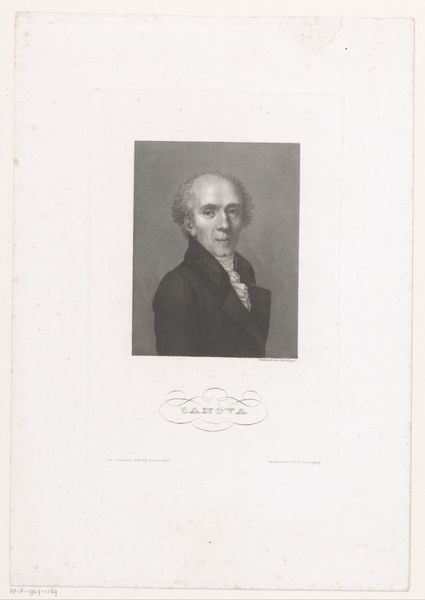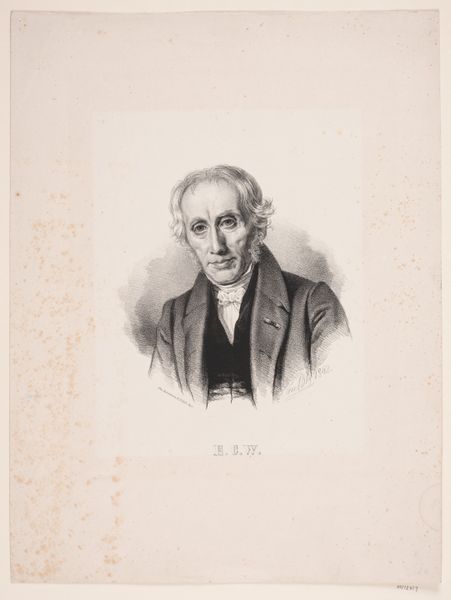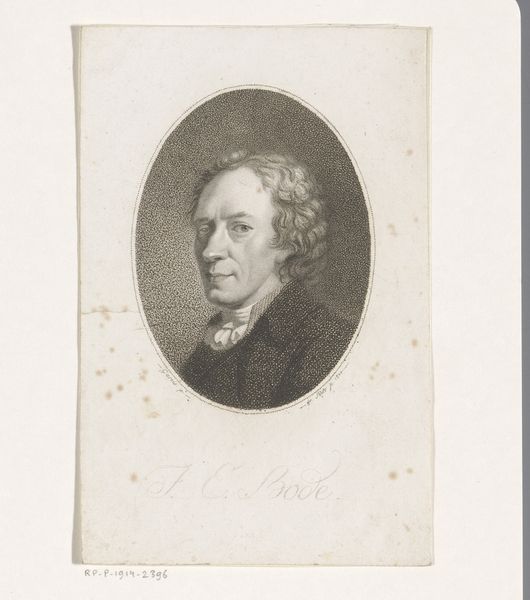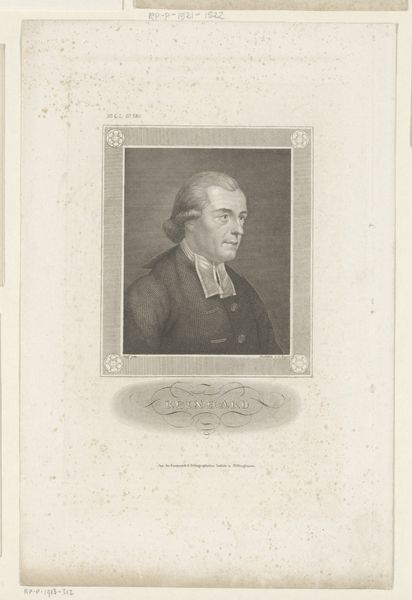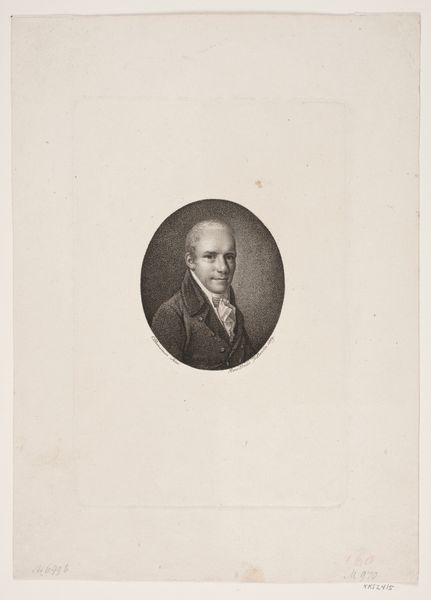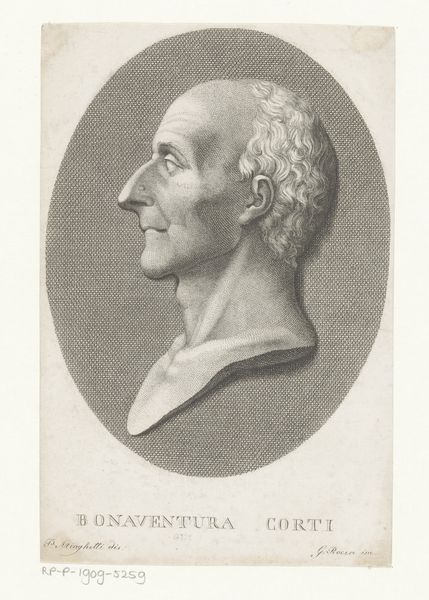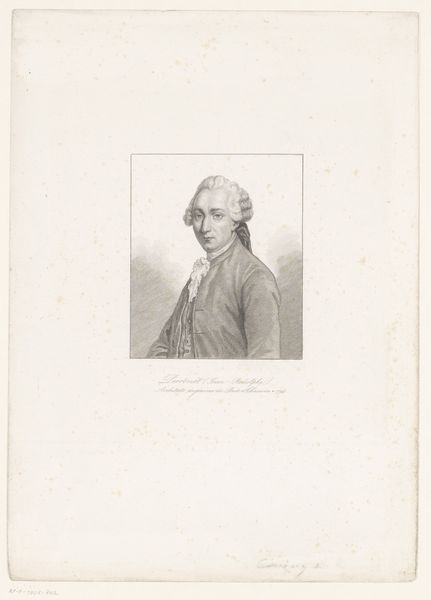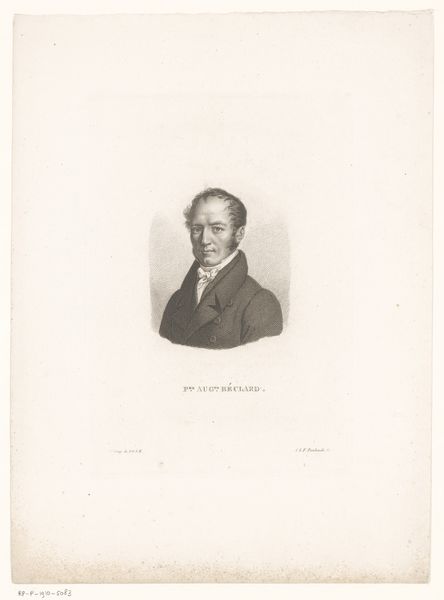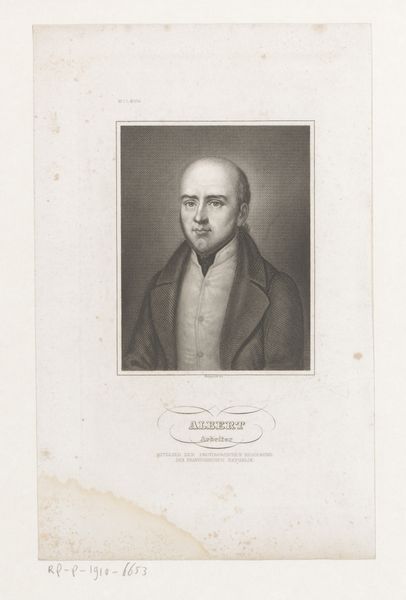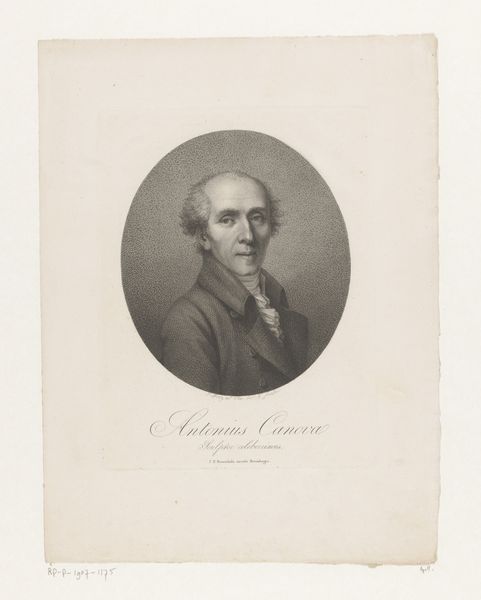
drawing, print, paper, engraving
#
portrait
#
drawing
#
neoclacissism
# print
#
paper
#
engraving
Dimensions: height 267 mm, width 202 mm, height 361 mm, width 260 mm
Copyright: Rijks Museum: Open Domain
Jacob Merz made this portrait of Antonio Canova using etching and drypoint. Look closely, and you will see the image is created from thousands of tiny dots and lines incised into a metal plate. The magic of this print lies in its materiality, and the delicate way the artist worked the metal. The etching process allowed Merz to create fine, consistent lines, which he then built upon using the drypoint technique, scratching directly into the plate with a sharp needle. This created a burr, a rough edge that catches the ink, resulting in the soft, velvety lines we see here, particularly around Canova’s face and hair. The printmaking process also speaks to the social context of the art world at this time. While Canova was celebrated for his unique sculptures, printmaking allowed for wider dissemination of his image, catering to a growing market for portraits and art reproductions. This speaks to an emerging modern culture, where the status of the artist was elevated, and their likeness became a valuable commodity. By considering the materials and making of this print, we gain a richer appreciation of its cultural significance, highlighting how even seemingly simple portraits are deeply embedded in broader social and economic trends.
Comments
rijksmuseum about 2 years ago
⋮
Canova’s gaze is unflinching and gentle at the same time. Merz portrayed the sculptor at the height of his fame. The two met in Vienna, when Merz had just returned from Hungary and Canova was working on the monument to Maria Christina of Austria. Merz was immediately impressed by Canova’s talent and was honoured to portray him from life. Merz died the following year.
Join the conversation
Join millions of artists and users on Artera today and experience the ultimate creative platform.
